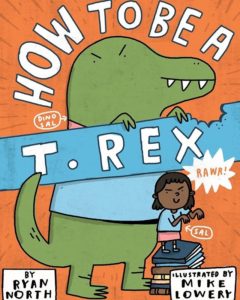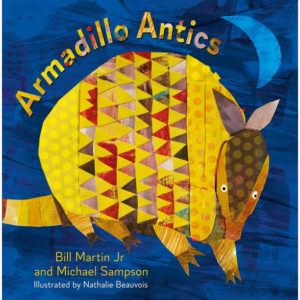Scaredy Squirrel series by Melanie Watt
A good friend of mine and I have been mailing each other squirrel-themed items cross country for a while now. Why? Just because we can! It started with a little light-hearted teasing and quickly progressed to mayhem.
Squirrels are polarizing which is great fodder for ongoing, long-distance, smack gifting. On one hand, they are adorable, resourceful creatures of great cunning–symbols of Mother Nature’s whimsy (think Beatrix Potter’s Squirrel Nutkin). On the other hand, they are evil incarnate–finding ways to destroy gardens and auto electrical systems, vandalizing bird feeders, and taunting neighborhood dogs.
Like opinions about squirrels, the surprises my friend and I have shipped each other have varied widely. They’ve ranged from cute, little earrings perfect for celebrating a gorgeous autumn day to an abomination of a lawn ornament in the form of a plastic stump cradling a cherub with an evil grin feeding an equally evil-looking, bushy-tailed beast. (Guess who found that on her porch!) I wish, though, that before things had gotten out of hand I had found the delightful Scaredy Squirrel picture book series written and illustrated by Melanie Watt.
Watt, a Canadian author and illustrator of children’s books, has created a fun book series with a message. Spanning from 2006 to 2022, her Scaredy Squirrel books have helped kids acknowledge their fears and grow in confidence. In each title, the main character Scaredy is seemingly paralyzed by a fear which grows as he dwells on it. As prepares to face his fear, Scaredy ratchets up the anxiety by creating equally elaborate and ridiculous safety kits and escape plans only to discover that life is full of surprises. Although the surprises interrupt his carefully crafted plans, they demonstrate that obstacles can be overcome, self-confidence can blossom, and a good time can be had by all.
Scaredy truly comes to life in Watt’s delightful illustrations. He practically visibly quivers on the page, adding to the tension of the stories. An anxiety-ridden, germophobic rodent, Scaredy radiates his nervousness to the audience every time he flashes his trademark ear-to-ear grin with tightly gritted teeth. He is fun to watch on the page as he navigates Watt’s elaborate maps and plans and charts; the fitness plans and campground map in Scaredy Squirrel Goes Camping display Scaredy’s paranoid preparations at their finest. Watt’s comic-book style–engaging and familiar–introduces the story without overwhelming readers and offers an accessible means of interacting with the book.
The series lends itself to preschool and early elementary audiences through the topics presented and the vocabulary level. The books are great for reading aloud with an adult as they are rich in opportunities to interact with the art and the text. Scaredy’s elaborate maps and escape plans are a hoot, and it’s fun to trace their pathways across the pages together. His antics and his journeys through anxiety-inducing situations offer so many points for kids and adults to talk through tough situations.
However you may feel about squirrels in real life, try one of the Scaredy Squirrel series titles for an amusing, feel-good read. Happy reading!



